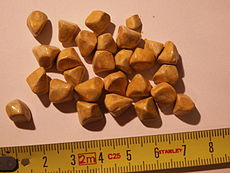
Cholalithiasis is simply the health disorder Related with gall bladder which is caused by the accumulation of the stone in the bladder .A gallstone is a crystalline concretion formed within the gallbladder by accretion of bile components. These calculi are formed in the gallbladder but may distally pass into other parts of the biliary tract such as the cystic duct, common bile duct, pancreatic duct or the ampulla of Vater. Rarely, in cases of severe inflammation, gallstones may erode through the gallbladder into adherent bowel potentially causing an obstruction termed gallstone ileus.
 Presence of gallstones in the gallbladder may lead to acute cholecystitis, an inflammatory condition characterized by retention of bile in the gallbladder and often secondary infection by intestinal microorganisms, predominantly Escherichia coli, Klebsiella, Enterobacter and Bacteroidesspecies. Presence of gallstones in other parts of the biliary tract can cause obstruction of the bile ducts, which can lead to serious conditions such as ascending cholangitis or pancreatitis. Either of these two conditions can be life-threatening and are therefore considered to be medical emergencies.
Presence of gallstones in the gallbladder may lead to acute cholecystitis, an inflammatory condition characterized by retention of bile in the gallbladder and often secondary infection by intestinal microorganisms, predominantly Escherichia coli, Klebsiella, Enterobacter and Bacteroidesspecies. Presence of gallstones in other parts of the biliary tract can cause obstruction of the bile ducts, which can lead to serious conditions such as ascending cholangitis or pancreatitis. Either of these two conditions can be life-threatening and are therefore considered to be medical emergencies.
REMEDY:
Medical
Cholesterol gallstones can sometimes be dissolved by oral ursodeoxycholic acid, but it may be necessary for the patient to take this medication for up to two years. Gallstones may recur, however, once the drug is stopped. Obstruction of the common bile duct with gallstones can sometimes be relieved by endoscopic retrograde sphincterotomy (ERS) following endoscopic retrograde cholangiopancreatography (ERCP). Gallstones can be broken up using a procedure called extracorporeal shock wave lithotripsy (often simply called "lithotripsy"),which is a method of concentrating ultrasonic shock waves onto the stones to break them into tiny pieces. They are then passed safely in the feces. However, this form of treatment is suitable only when there is a small number of gallstones.
- Surgical
Cholecystectomy (gallbladder removal) has a 99% chance of eliminating the recurrence of cholelithiasis. Surgery is only indicated in symptomatic patients. The lack of a gallbladder may have no negative consequences in many people. However, there is a portion of the population — between 10 and 15% — who develop a condition called postcholecystectomy syndrome which may cause gastrointestinal distress and persistent pain in the upper-right abdomen, as well as a 10% risk of developing chronic diarrhea.
There are two surgical options for cholecystectomy:
- Open cholecystectomy is performed via an abdomenal incision (laparotomy) below the lower right ribs. Recovery typically requires 3–5 days of hospitalization, with a return to normal diet a week after release and to normal activity several weeks after release.
- Laparoscopic cholecystectomy, introduced in the 1980s, is performed via three to four small puncture holes for a camera and instruments. Post-operative care typically includes a same-day release or a one night hospital stay, followed by a few days of home rest and pain medication.Laparoscopic cholecystectomy patients can, in general, resume normal diet and light activity a week after release, with some decreased energy level and minor residual pain continuing for a month or two. Studies have shown that this procedure is as effective as the more invasive open cholecystectomy, provided the stones are accurately located by cholangiogram prior to the procedure so that they can all be removed.
Post a Comment